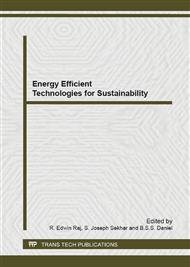p.344
p.351
p.359
p.364
p.371
p.378
p.388
p.392
p.398
Maximum Loss Reduction and Voltage Profile Improvement with Placement of Hybrid Solar-Wind System
Abstract:
Distributed generators (DG) are much beneficial in reducing the losses effectively compared to other methods of loss reduction. It is expected to become more important in future generation. This paper deals with the multi DGs placement in radial distribution system to reduce the system power loss and improve the voltage profile by using the optimization technique of particle swarm optimization (PSO). The PSO provides a population-based search procedure in which individuals called particles change their positions with time. Initially, the algorithm randomly generates the particle positions representing the size and location of DG. The proposed PSO algorithm is used to determine optimal sizes and locations of multi-DGs. The objective function is the combination of real, reactive power loss and voltage profile with consideration of weights and impact indices with and without DG. Test results indicate that PSO method can obtain better results on loss reduction and voltage profile improvement than the simple heuristic search method on the IEEE33-bus and IEEE 90-bus radial distribution systems.
Info:
Periodical:
Pages:
371-377
Citation:
Online since:
September 2013
Authors:
Price:
Сopyright:
© 2013 Trans Tech Publications Ltd. All Rights Reserved
Share:
Citation:



